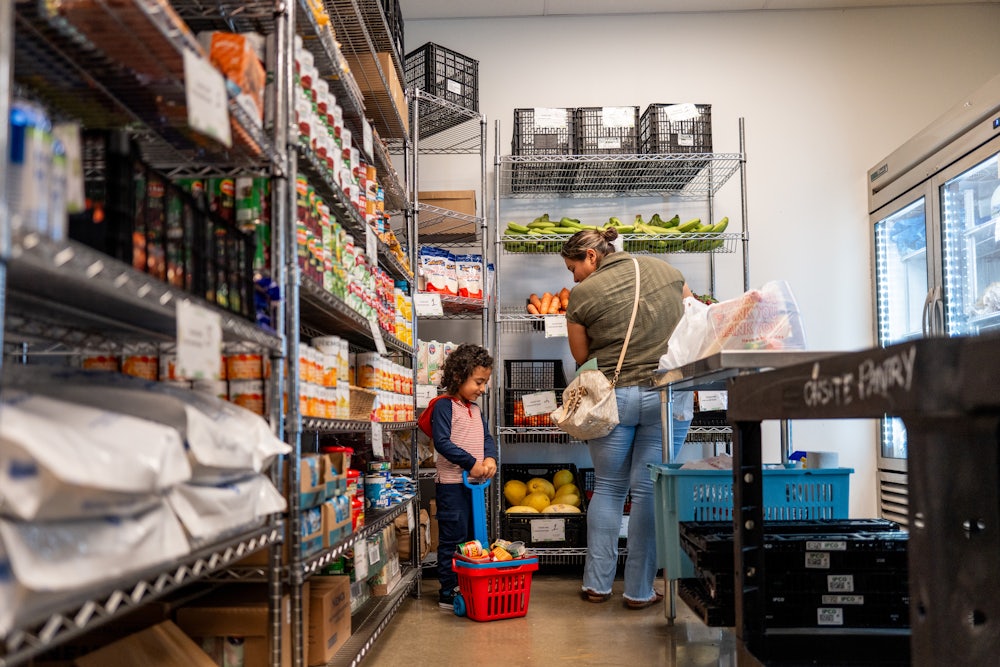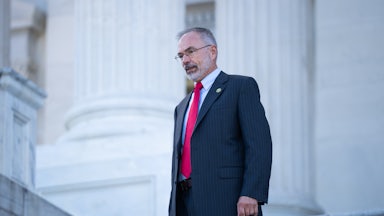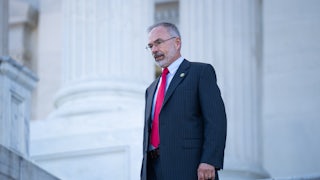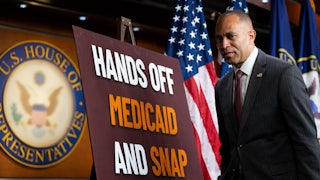The U.S. Department of Agriculture is eliminating its annual effort to collect data on the state of food insecurity across the country. The news of the decision comes at a time when the federal government is dramatically slashing spending on nutrition programs.
In a statement announcing the termination of these reports on Saturday, the USDA characterized them as “redundant, costly, politicized, and extraneous studies” that “do nothing more than fear monger.” The final report, providing data on food insecurity for 2024, will be released next month. Experts disagree with the way the survey is being characterized by the Trump administration. They contend that the survey provides a valuable insight into how Americans live, and that this data will be sorely missed amid radical changes to the social safety net.
“If you’re going to make major policy changes, you should be availing yourself of data to understand exactly whether it accomplished what you were hoping for or not,” said Elaine Waxman, senior fellow in the Tax and Income Supports Division at the Urban Institute. The USDA decision was first reported by The Wall Street Journal on Saturday.
The annual survey has been in place for roughly three decades, and has been used by lawmakers to help determine funding, administration, and efficacy of federal, state, and local programs. It’s also helpful to particular organizations and even schools for more precisely targeting assistance. Food banks employ the data to determine which areas of their community are most in need of help, while school districts and universities may use it to assess which students may be lacking in basic needs, especially as higher food insecurity levels are associated with lower odds of graduating college.
It has also helped researchers better understand the intersection between poverty and food insecurity across demographics—particularly during times of economic hardship, such as the aftermath of the Great Recession and the coronavirus pandemic. Diane Whitmore Schanzenbach, an economist at the McCourt School of Public Policy at Georgetown University, described the annual report as “an alternative measure of economic health.”
“Just like when we go to the doctor, there’s many different ways that they measure and assess our health. We need multiple ways,” said Schanzenbach. “I’m really befuddled that the Department of Agriculture referred to this as redundant.”
The survey includes questions that ask participants whether certain statements have applied to them over the past year; for example, “We worried whether our food would run out before we got money to buy more,” or for households with children, “The children were not eating enough because we just couldn’t afford enough food.” It also asks whether family members cut the size of their meals or did not eat at all because they did not have enough food, and the frequency of these occurrences.
USDA data has shown that food insecurity ticked up in recent years, reaching the highest point it has in a decade in 2023. Eighteen million households were food insecure in 2023, equivalent to 13.5 percent of all American households. Food insecurity levels were disproportionately high for Black and Hispanic households.
The increase between 2021 and 2023 coincided with the expiration of several pandemic-era programs that provided additional support to low-income households, such as an enhanced child tax credit and emergency allotments for the Supplemental Nutrition Assistance Program, formerly known as food stamps, which temporarily increased benefit amounts. The comparatively low levels of food insecurity in 2020 and 2021 could be seen as evidence that immediate government interventions in the wake of the pandemic were effective in assisting needy Americans.
The USDA’s assessment of the report as failing “to present anything more than subjective, liberal fodder” has shocked the research community that has relied on this data for years. Waxman also challenged the assertion that this data is redundant, noting that food insecurity is tied to, but not necessarily representative of, a family’s poverty level. Lower-income households may report that they are food secure because they qualify for benefits like SNAP, while middle-income Americans may be struggling to obtain enough to eat because they do not receive any assistance.
“There are a lot of things besides just income that can drive food insecurity, things like low assets or negative assets, disability, poor mental health, lack of a social network, [and] income volatility within the year,” said Waxman. Food insecurity is also correlated with several health issues, such as diabetes and heart disease—issues that a presidential administration concerned with the state of Americans’ health would ostensibly find useful in measuring.
This change comes two months after Congress approved a new law that would dramatically slash federal spending on SNAP. The measure imposes stricter work requirements on participants and pushes a percentage of the cost of SNAP benefits onto states. The nonpartisan Congressional Budget Office has estimated that millions of people could lose their benefits over the next 10 years due to these changes as well as other SNAP-related restrictions in the bill. Without annual data on food insecurity, it may be difficult to gauge the impact of the new law.
“We should have this information so that we can use food insecurity as one of several measures [to show] the impact of all of these changes that are coming down the pike, and we will not be able to assess the impact of that,” said Schanzenbach. “Is that by design, or is that by omission, I don’t know. One can only speculate.”
Meanwhile, food banks across the country are overwhelmed with increased visits amid freezes to certain grants, such as a program that helps community organizations purchase food items from local farmers. High food prices have contributed to this greater need. The loss of this data could make it more difficult for food banks to help the communities that are most in need of assistance, even as more people are reliant on their services.
The food insecurity reports can be a gauge of the “softness or the success of the low-wage labor market,” said Schanzenbach. They fill a niche in economic research that cannot be replaced.
“You need the federal survey as the guiding light,” said Schanzenbach. “It captures something that unemployment doesn’t capture, and consumption doesn’t capture, and poverty doesn’t capture. It is a really important measure of well-being.”
There is no clear alternative to the data provided by the USDA reports. The Urban Institute conducts an annual survey that scans food insecurity across the nation, but Waxman noted that its sample size was far smaller than that of the USDA, and that it does not go into the same level of detail. Although the Urban Institute will try to adjust to compensate for these changes within “the time and budget we have available,” said Waxman, it cannot replace the USDA report.
“A difference there is that we can provide some national statistics, but we cannot do things like state-level data,” she said. “We just can’t replicate that, and it’s very hard to build samples that would do that.”
The Trump administration has taken a cavalier attitude toward data collection. These efforts have been exemplified by actions such as purging government websites of certain information and ending the National Oceanic and Atmospheric Administration’s tracking of extreme weather. President Donald Trump fired the commissioner of the Bureau of Labor Statistics in August, which experts warn could signal interference that could compromise the integrity of its data. The loss of data on food insecurity fits a pattern of an administration deciding which data is important to measure and make public and which is not, with consequences across the country.
Anti-hunger advocates argue that food insecurity will persist, but without data collection, it will simply be overlooked.
“Ending data collection will not end hunger, it will only make it a hidden crisis that is easier to ignore and more difficult to address,” said Crystal FitzSimons, the president of the Food Research and Action Center, in a statement.










